SIGGRAPH 2006: Intersections

Chair(s):
- Bonnie L Mitchell
-
- Bowling Green State University
Art Papers Chair(s):
- Paul Brown
-
- Sussex University
Art Show Administrator(s):
Location:
Boston, Massachusetts, United States of America
Dates:
July 30th-August 3rd, 2006
Art Show Overview:
Two roads diverged in a wood, and I —
I took the one less traveled by,
And that has made all the difference.Robert Frost (1874 – 1963), The Road Not Taken
Each work in the SIGGRAPH 2006 Intersections exhibition metaphorically represents a journey that the artist has undertaken. As the work developed, the artist traveled along a path, encountering intersections where new ideas, techniques, media, people, and obstacles converged. It was here, at these crossroads, that the piece began to take on form; the meaning and direction became defined. At each intersection, important decisions had to be made. The trail behind the artist led back to familiar territory, and the road ahead led to further exploration of existing knowledge. The intersecting paths offered challenges and exciting opportunities to explore new concepts, integrate new media, and experiment with unfamiliar processes. At each intersection, the artist needed to stop and assess the situation, sometimes giving way to others who moved ahead or in another direction.
Stopping in the middle of an intersection is often dangerous – collisions are inevitable. The convergence of ideas, goals, processes, technologies, and people from various disciplines can be shattering. Innovation and creative vision emerge only after numerous unsuccessful, yet knowledge-gaining encounters at intersections. Traveling an unknown path is also not without risk. It takes a courageous person with perseverance to dare to do things differently. Many people choose to take the easy, well-known path. The artists in the Intersections exhibition are those who dared to seek out intersections and new paths and venture off into unknown territory.
The artwork in the Intersections exhibition exemplifies the highest quality contemporary digital artwork from around the world. The SIGGRAPH 2006 artists have merged their interests in science, electronics, social sciences, humanities, and/or pop culture with their desire to express themselves through the production of art. Their works reflects the convergence of technical and artistic concerns where identities, politics, social issues, and technology are constantly being negotiated. In the SIGGRAPH community, where artists are researchers and technicians, and researchers and technicians transform into artists, the segregation of disciplines collapses. In this environment, digital art is not seen as an end in itself, but as a place where people from various fields can tangibly cross paths, allowing for new connections to be made.
This year’s Art Gallery includes 2D, 3D, and 4D wall-hung work, electronic installation art, sculpture, art animations, sound installations, interactive monitor-based artwork, electronically mediated performance, theoretical papers, panels, artist and performer presentations, and an extensive retrospective exhibition of Charles A. Csuri’s work. All of the works exhibited or performed use technology as an integral element. They all exemplify the creative intersection of concept, technical innovation, and artistic expression.
Bonnie Mitchell
SIGGRAPH 2006 Art Gallery Chair
Bowling Green State University
Committee(s):
- Karla Loring
- Paul Brown
-
- Sussex University
- Tracy Colby
-
- Otis College of Art and Design
- Heather Elliott-Famularo
-
- Bowling Green State University
- Rob Grossman
- Paul Brown
-
- Sussex University
General Committee:
Additional Committees:
Art Papers Reviewers:
Website:
https://www.siggraph.org/s2006/main.php?f=conference&p=art
Exhibition Artworks:
-
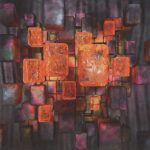
0512
[Terry Calen]
Categories: [2D & Wall-Hung] -
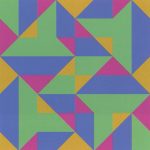
4^16
[Paul Brown]
Categories: [2D & Wall-Hung] -
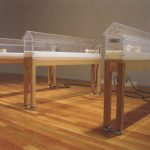
8520 S.W. 27th pl v.2
[Fernando Orellana]
Categories: [3D & Sculpture] -
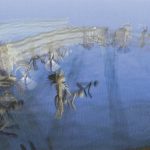
A Society of Stickpeople (captured, #31)
[Nathan Selikoff]
Categories: [2D & Wall-Hung] -
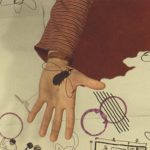
À tort ou à raison
[Joris Clerté] [Philippe Massonnet]
Categories: [Animation & Video] -

Abstinen
[Lisa Erdman]
Categories: [2D & Wall-Hung] -
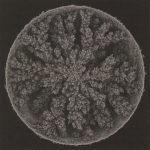
Aggregation 22
[Andy Lomas]
Categories: [2D & Wall-Hung] -
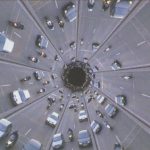
Akkad
[Grégoire Pierre]
Categories: [Animation & Video] -

Alive
[Lucy Blackwell]
Categories: [Animation & Video] -

Altar-ations
[Juliet Davis]
Categories: [Interactive & Monitor-Based] -

Annual Checkup: Pharmaceuticals for the ...
[Lisa Erdman]
Categories: [Animation & Video] -
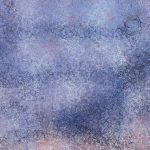
Autarkeia Aggregatum
[Bret Battey]
Categories: [Animation & Video] -
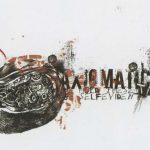
Axiomatic Wisdom
[Alexdrina Chong]
Categories: [2D & Wall-Hung] -

biomes
[Vicky Isley] [Paul Smith]
Categories: [2D & Wall-Hung] -
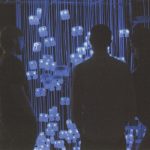
Bion
[Adam W. Brown] [Andrew Fagg]
Categories: [Installation] -

Biophilia
[Mark Cypher]
Categories: [Installation] -

Blot 2005/01/02/10
[David Hart]
Categories: [2D & Wall-Hung] -
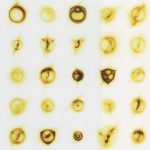
Blot 2005/11/14/368
[David Hart]
Categories: [2D & Wall-Hung] -
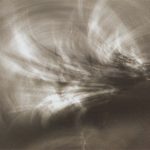
Brush Traces I
[Alain Bittler]
Categories: [2D & Wall-Hung] -
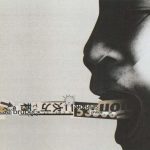
C++
[Teppei Kuroyanagi]
Categories: [Animation & Video] -
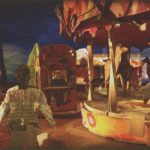
Café Bouillu
[Stéphane Berla]
Categories: [Animation & Video] -
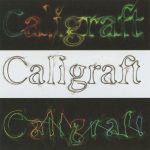
Caligraft
[Ricard Marxer Piñón]
Categories: [2D & Wall-Hung] -
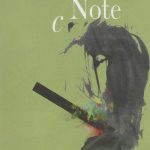
cNote
[Chris Hinton]
Categories: [Animation & Video] -

Code
[Sadam Fujioka] [Osamu Sambuichi]
Categories: [Interactive & Monitor-Based] -
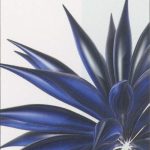
CODE_LINE_Blue
[Toshihiro Kamei]
Categories: [2D & Wall-Hung] -
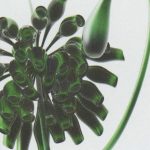
CODE_LINE_Green
[Toshihiro Kamei]
Categories: [2D & Wall-Hung] -

CODE_LINE_Red
[Toshihiro Kamei]
Categories: [2D & Wall-Hung] -
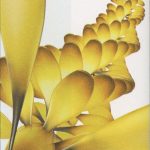
CODE_LINE_Yellow
[Toshihiro Kamei]
Categories: [2D & Wall-Hung] -

Consumerin
[Lisa Erdman]
Categories: [2D & Wall-Hung] -

Contemplations on Inner Space (Detail)
[Anne Behrnes]
Categories: [2D & Wall-Hung] -
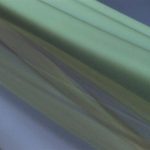
Contemplations: 2005.2
[Kenneth A. Huff]
Categories: [Animation & Video] -
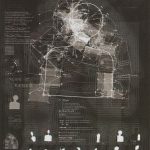
Cybernetic Ceremony in Black Velvet
[Sherban Epuré]
Categories: [2D & Wall-Hung] -

Dark Peculiar Toy No. 03
[Viktor Koen]
Categories: [2D & Wall-Hung] -
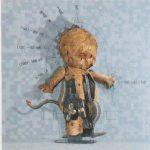
Dark Peculiar Toy No. 04
[Viktor Koen]
Categories: [2D & Wall-Hung] -

Dark Peculiar Toy No. 19
[Viktor Koen]
Categories: [2D & Wall-Hung] -
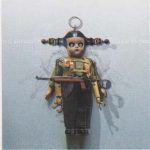
Dark Peculiar Toy No. 21
[Viktor Koen]
Categories: [2D & Wall-Hung] -

data_cosm
[Michael Takeo Magruder]
Categories: [Internet Art] -

do you see what i see 15
[Diane Vetere]
Categories: [2D & Wall-Hung] -
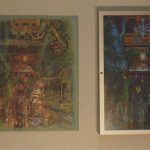
Dream Stage 3 - Procession
[Miguel Fiadante]
Categories: [2D & Wall-Hung] -
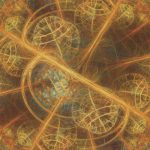
Dreams in High Fidelity
[Scott Draves]
Categories: [2D & Wall-Hung] -
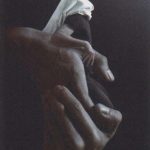
Driven 05
[Saritdikhun Somasa]
Categories: [2D & Wall-Hung] -
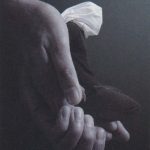
Driven 06
[Saritdikhun Somasa]
Categories: [2D & Wall-Hung] -
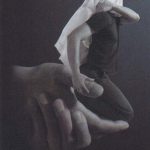
Driven 07
[Saritdikhun Somasa]
Categories: [2D & Wall-Hung] -
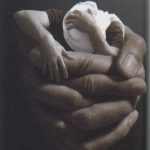
Driven 08
[Saritdikhun Somasa]
Categories: [2D & Wall-Hung] -
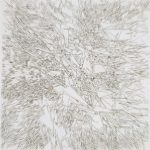
DSCN0779.1CC
[Hans E. Dehlinger]
Categories: [2D & Wall-Hung] -
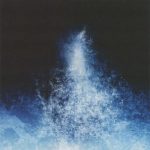
e-scape
[Masakazu Takano]
Categories: [2D & Wall-Hung] -

electric moOns
[Christopher Bauder]
Categories: [Installation] -
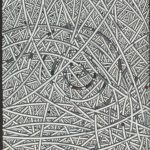
Emergence: Order
[Santiago V Lombeyda]
Categories: [2D & Wall-Hung] -

Ethnivox
[Lisa Erdman]
Categories: [2D & Wall-Hung] -
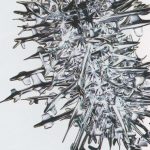
EVOLUTION
[Masashi Nishimura]
Categories: [2D & Wall-Hung] -

Exertions of Exodus
[Jana Whittington]
Categories: [2D & Wall-Hung] -

Exponential Growth
[Jessica Maloney]
Categories: [2D & Wall-Hung] -
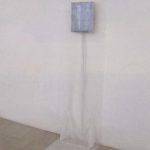
Exuvia
[Alessandro Capozzo] [Katja Noppes]
Categories: [Installation] -
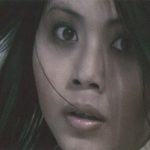
Fall of Antioch
[Stephan Betz] [Magid Hoff]
Categories: [Animation & Video] -

Female Gape #3
[Mark Koven]
Categories: [Animation & Video] -

Gemotional Bumpy Screen
[Yoichiro Kawaguchi]
Categories: [2D & Wall-Hung] -
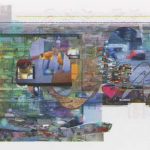
Global Happenings Excel 23
[Sandra Crisp]
Categories: [2D & Wall-Hung] -
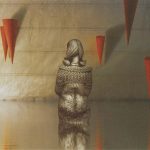
God Save Us from Intoxicating Glances
[Davida Kidd]
Categories: [2D & Wall-Hung] -
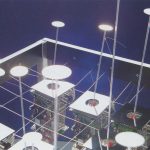
GORI.Node Garden - Gardening Two
[Jee Hyun Oh]
Categories: [Installation] -

Graffiti Analysis
[fi5e]
Categories: [Installation] -

Green
[Shawn Decker]
Categories: [Installation] -
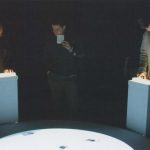
Heartbeats
[Orna Portugaly] [Daphna Talithman]
Categories: [Installation] -

Hilbert Cube
[Carlo Séquin]
Categories: [3D & Sculpture] -

Homotrol
[Lisa Erdman]
Categories: [2D & Wall-Hung] -
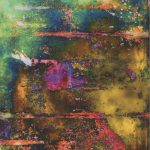
Imaginary Flight over Okinawa
[Thomas Suter]
Categories: [2D & Wall-Hung] -

Infoscan 4
[Sandra Crisp]
Categories: [2D & Wall-Hung] -
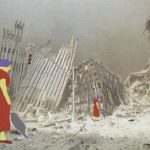
Inside the Dishwasher
[sin sin]
Categories: [Animation & Video] -
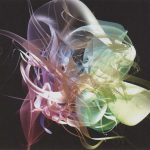
Introspection
[Dennis H. Miller]
Categories: [2D & Wall-Hung] -

Jesurex
[Lisa Erdman]
Categories: [2D & Wall-Hung] -
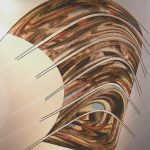
Kite Form: Chrome Bowl
[Mark Millstein]
Categories: [3D & Sculpture] -

Kite Form: Laminate
[Mark Millstein]
Categories: [3D & Sculpture] -
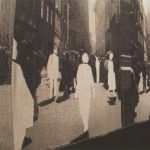
Krakow: a woven story of memory and eras...
[Joanna Maria Berzowska]
Categories: [2D & Wall-Hung] -
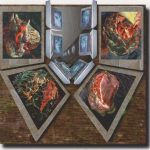
LavaBody + 6
[LiQin Tan]
Categories: [2D & Wall-Hung] [Animation & Video] -
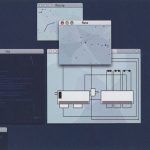
Leonardo Log
[Jorn Ebner]
Categories: [Internet Art] -
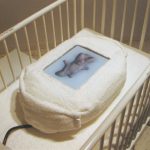
little one
[John Slepian]
Categories: [Interactive & Monitor-Based] -
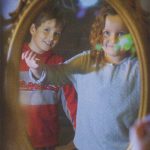
Magic Mirror
[Benedict Sheehan]
Categories: [3D & Sculpture] -
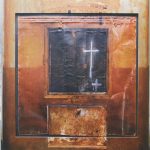
Margoa
[Dorothy Simpson Krause]
Categories: [2D & Wall-Hung] -

Mask of Intent, Mask of Sleep, Mask of W...
[Gil Bruvel]
Categories: [3D & Sculpture] -

Media Mirror
[Jefferson Y. Han]
Categories: [Animation & Video] [Installation] -
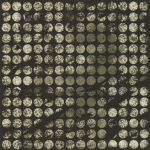
Meditation
[Hye Kyung Kim]
Categories: [2D & Wall-Hung] -
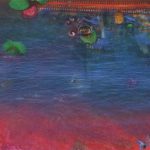
mnemonicon 23
[Phillip George]
Categories: [2D & Wall-Hung] -
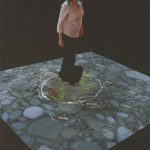
Moderation
[Zack Booth Simpson]
Categories: [Installation] -
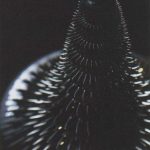
Morpho Tower/Spiral Swirl
[Sachiko Kodama]
Categories: [3D & Sculpture] -
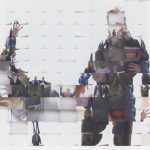
Na av da (Now by Then)
[Oyvind Kolas]
Categories: [Interactive & Monitor-Based] -

Open House
[Mark J. Stock]
Categories: [2D & Wall-Hung] -

Oreille remplie de plumes
[Luis Nieto]
Categories: [Animation & Video] -

Patriotec
[Lisa Erdman]
Categories: [2D & Wall-Hung] -
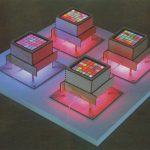
Pixelboxes
[Patrick Lichty]
Categories: [3D & Sculpture] -
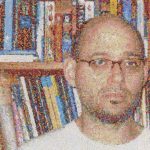
Psychopharmacology
[Gene Greger]
Categories: [2D & Wall-Hung] -

Queensbridge Wind Power
[Andrea Polli]
Categories: [Animation & Video] -
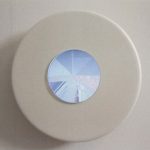
randomSeed 001
[Vicky Isley] [Paul Smith]
Categories: [2D & Wall-Hung] -
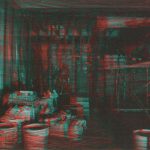
Ray Tracings of the In Between: Living S...
[Shawn Lawson]
Categories: [2D & Wall-Hung] -

Ray Tracings of the In Between: Tractor ...
[Shawn Lawson]
Categories: [2D & Wall-Hung] -
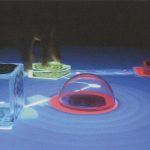
reacTable*
[Sergi Jordà]
Categories: [Installation] -

Reading the Space as an Entity - Galleri...
[Murat Germen]
Categories: [2D & Wall-Hung] -

Rocking Circle C
[Madge Gleeson]
Categories: [2D & Wall-Hung] -
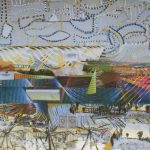
Rondo
[Ana Z. Ursyn]
Categories: [2D & Wall-Hung] -
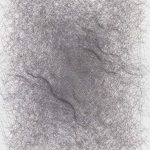
Rosettes grises
[Jean-Pierre Hébert]
Categories: [2D & Wall-Hung] -

Rupture
[Jean Detheux]
Categories: [Animation & Video] -

Sand and Grasses1
[Cynthia Beth Rubin]
Categories: [2D & Wall-Hung] -
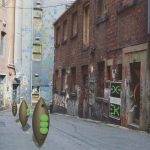
Scenes from Ludea
[Troy Innocent]
Categories: [Animation & Video] [Installation] -

shape.53a#2
[Tim Borgmann]
Categories: [2D & Wall-Hung] -
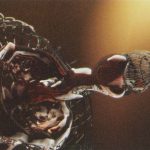
shape.69c
[Tim Borgmann]
Categories: [2D & Wall-Hung] -
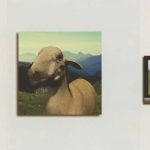
Sheep Jet Head
[Brit Bunkley]
Categories: [2D & Wall-Hung] [3D & Sculpture] [Animation & Video]
1
2
Next ›
Last »
Exhibition Writings and Presentations:
-
Title:
Beyond Brush and Easel: The Computer Art of Charles A. Csuri from 1963 to present
Author(s):
Category: Panel / Roundtable
Abstract Summary:
This panel explores the computer art of Charles A. Csuri, an artist, recognized by Smithsonian Magazine as “the father of digital art and animation,” and includes discussion of his works from 1963 to the present. In this rare opportunity, we will also hear reflections from the pioneering artist himself, now Professor Emeritus and Artist in Residence at The Ohio State University. This art panel is presented in conjunction with the retrospective exhibition, Charles A. Csuri: Beyond Boundaries, 196
Title: Drunk on Technology, Waiting for the Hangover: A Test Plot
Author(s):
Category: Paper
Abstract Summary:
No abstract available.
[View PDF]Title: Flashimation: The Context and Culture of Web Animation
Author(s):
Category: Essay
Abstract Summary:
On October 15, 1997, the first-ever cartoon produced solely for the web made its premiere [Sullivan 1997]. Spumco, a Hollywood-based animation house formed by “Ren & Stimpy” creator John Kricfalusi, commonly known as John K., produced the first installment of The Goddamn George Liquor Program after experimentation with Marcomedia’s popular animation and interface-development program, Flash [Tanner 2001]. Although only eight one-minute episodes of the program were produced, the web cartoon launched a new style of animation, which has since earned an unofficial nickname: “Flashimation.” The purpose of this paper is to explore the origins and effects of this type of animation; examine the forces that turned animators towards the web, its visual style, and the meanings with which it is associated; and the effect Flashimation has had on modern animation and the current animation community. Several threads of thought explain the evolution and culturalization of the new-media phenomenon known as Flashimation. Television animation, increasing access to and preference for the internet, the technological restrictions of this new medium, and the availability of animation software itself have coalesced to produce a major change in the cultural reconceptualization and consumption of modern animation. Collectively, they explain a complex and layered transition from “kid-vid” cartoons to short and crude forms of sophomorically humorous animation produced specifically for an adult audience.
[View PDF]Title: Generative and Genetic Art
Author(s):
Category: Panel / Roundtable
Abstract Summary:
This panel brings together leading experts of generative and genetic art from the past 25 years, all of whose work has been featured at the annual SIGGRAPH conferences during this period. The panelists examine a range of topics including: “chance and creativity,” “can art be an equation?” “the procedural and generative software toolbox,” “artist as god,” “the creative peaks and troughs of traveling through multidimensional parameter space,” and “genetic art into genetic engineering?” With the gr
Title: Living Laboratories: Making and Curating Interactive Art
Author(s):
Category: Essay
Abstract Summary:
This paper describes the development of laboratory concepts in the making and curating of interactive art, in which the exhibition becomes a site for collaboration between curators, artists, and audiences. It describes Beta_space, an experimental public venue that seeks to realise the concept of the exhibition as living laboratory
through the participatory qualities of interactive computer-based art. The paper places this initiative within an emerging phenomenon of hybrid production and exhibition spaces. It argues that the evolution of such concepts has been hampered by the continued distinctions,
within traditional cultural institutions, among art, science and technology, object and experience, creation and consumption.
Title: Locative Media: Urban Landscapes and Pervasive Technology Within Art
Author(s):
Category: Panel / Roundtable
Abstract Summary:
Locative media: the utilization of pervasive, portable, networked, location-aware computing devices that allow for user-defined mapping and artistic intervention within urban geographies, transmuting them into an experimental canvas. This panel examines the current or future state of locative media practice, establishing an artistic and theoretical discourse on pervasive computing. The advent of an always-on, always-accessible information sphere creates an enhanced reality space that enables c
Title: Marking Space: on Spatial Representation in Contemporary Visual Culture
Author(s):
Category: Essay
Abstract Summary:
The following paper looks at different ways that space is being dealt with in contemporary visual culture, and attempts to link these evolving modes of spatial representation to emerging technologies, particularly GPS, GIS, and openGL, as well as to suggest links between the depiction and thinking about space in the current moment with similar or related explorations from the history of late-twentieth century avant-garde artistic practice. While this paper is necessarily more suggestive than exhaustive, I’ve made an attempt to choose contemporary visual practices and practitioners that I felt could stand as representatives for larger tendencies in their respective domains. This paper originated as a somewhat personal document, an attempt to situate my recent art practice within a larger historical and cultural context. As such, at times the links between these divergent practices must be made through the sensibility of the author.
[View PDF]Title: Meta-visual/media/space - algorithmic "intersection," the new aspect of media art exhibition
Author(s):
Category: Essay
Abstract Summary:
When we start to think about “vision,” imaging, and our ways of perceiving the outside world, we must be clear about what we mean. Even in Japan, where imaging technologies play a central role, there are misunderstandings about what “imaging” is and what comes under its umbrella. By “imaging,” I mean the creation of images through any medium that is not simply manual: those that can be traced, reflected, photographed, reproduced, and projected. The term is not restricted to animation, video, film, or other means of creating pictures in motion. “Imaging” encompasses shadow play, magic lantern, anamorphoses, and all the processes of visualization. Since the Tokyo Metropolitan Museum of Photography (TMMP) opened as a center for photography and other visual media, it has been important to discuss what “imaging” means.
[View PDF]Title: New Interactions: Communities and Information
Author(s):
Category: Panel / Roundtable
Abstract Summary:
In coining the phrase “relational aesthetics,” the contemporary French art theorist and curator Nicolas Bourriaud attempted to define a trend in creative works that configures interactive scenarios in which everyday experiences are the catalyst for audience-driven participation. This panel explores how the tacit activities of urban living are being used to form the foundations for new types of interaction that exploit community life and information-rich environments. Topics include how “relatio
Title: New Media, New Craft?
Author(s):
Category: Essay
Abstract Summary:
This paper will examine the use of computer programming in relationship to the practice and approach of traditional crafts, paying specific attention to the ethos of the Arts and Crafts Movement as a model for assessing the use and status of computation in a creative context. In order to consider the role of programming in the context of traditional craft, it is important to provide a brief outline relating to the ethos and practice of craft. What is understood by the term craft, what are its characteristics and outcomes? After considering this, it will then be possible to apply this understanding to the role of programming and its engagement with digital material.
[View PDF]Title: Painting in a Digital World: I Told You So
Author(s):
Category: Essay
Abstract Summary:
Over the past 10 years, the proportion of painters who use computers in their work has been rising, and rising dramatically. They may not all be expert users, and they probably know next to nothing about digital art or its origins, and nothing at all about its pioneer artists.
They will not have heard of SIGGRAPH. They read Frieze. They probably outnumber hardcore digital artists by a factor of 50 to one. So if we are to speak of the way things are going in “digital art,” they are part of the picture.




